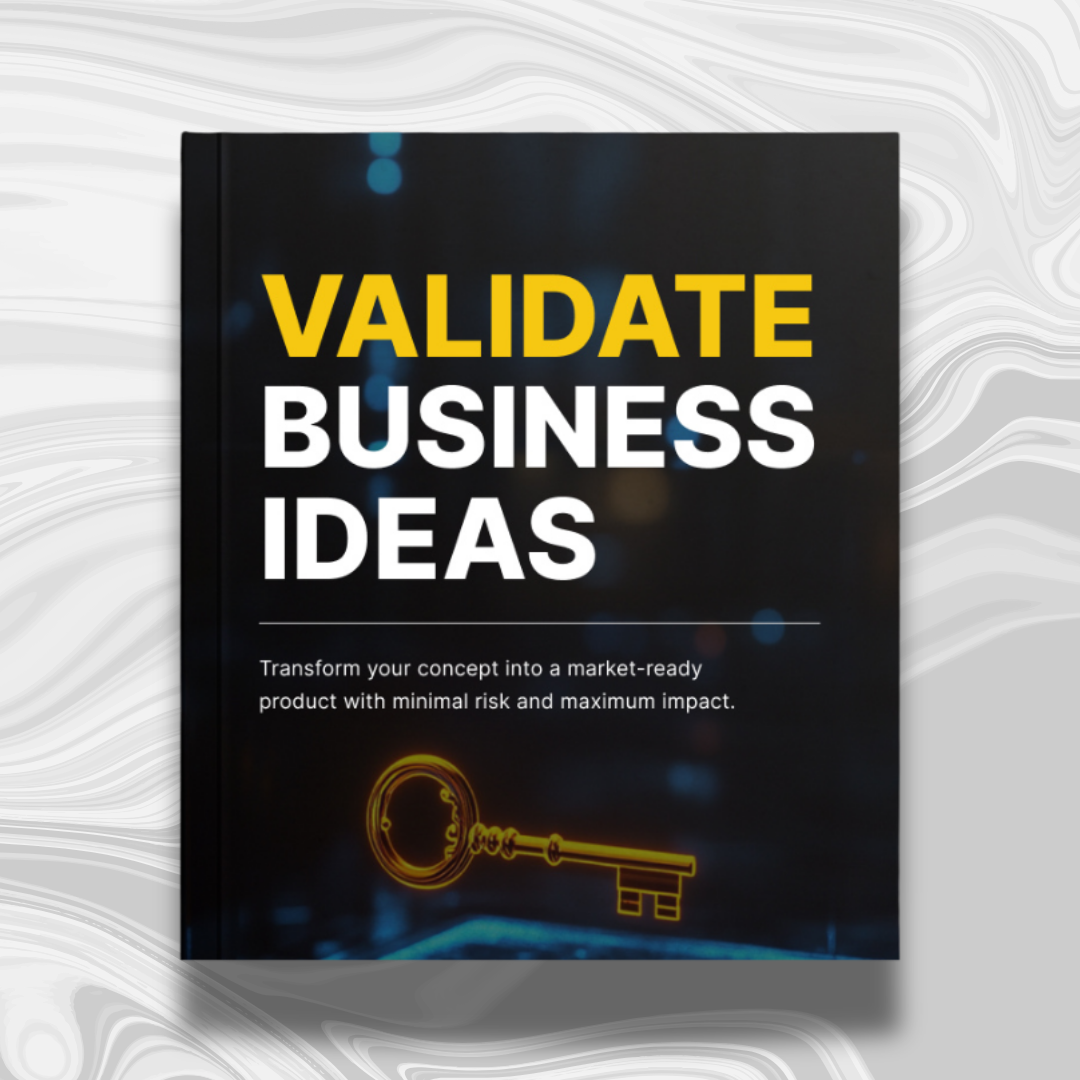
How to Validate a Business Idea
Share
Have you ever had a business idea that felt like a game-changer, but you weren’t sure if it would actually work? You’re not alone. Many aspiring entrepreneurs face the same dilemma: Is my idea worth pursuing, or will it flop? Knowing how to validate a business idea can mean the difference between investing time and money wisely or chasing a pipe dream.
The good news? You don’t need a massive budget or a crystal ball to figure it out. With the right approach to market research for business ideas, you can gather real-world insights, test your assumptions, and confidently decide if your idea has potential.
In this guide, we’ll walk through a proven, step-by-step process to validate your business idea. By the end, you’ll have actionable strategies to reduce risks and increase your chances of success. Plus, we’ll introduce you to an invaluable resource to take your business idea from concept to reality.
1. Start with Market Research for Business Ideas
Before you invest a dime, understanding your market is crucial. Who are your potential customers? What problems do they face? And most importantly, is there a demand for your solution?
Here are key steps to conduct effective market research:
a) Identify Your Target Audience
- Who will benefit most from your product or service?
- What are their demographics (age, gender, location, income level)?
- What pain points does your idea solve?
Use online tools like Google Trends, Reddit, and social media platforms to observe discussions and identify trends. Surveys and interviews with potential customers can also provide invaluable insights.
b) Analyze Competitors
Competition isn’t a bad thing—it confirms there’s a market. Study your competitors to identify gaps and opportunities.
- What products/services do they offer?
- What are customers saying in reviews?
- What pricing models are they using?
Tools like SEMrush and SimilarWeb can help you analyze competitor traffic and marketing strategies.
c) Validate Demand
Test demand using these simple methods:
- Pre-Sales: Offer your product or service before fully developing it.
- Landing Pages: Create a simple page describing your offer and track sign-ups.
- Social Media Tests: Run low-budget ads to gauge interest.
2. Test Your Business Idea with a Minimum Viable Product (MVP)
A Minimum Viable Product (MVP) is a stripped-down version of your product that delivers its core value. This allows you to test assumptions without building a fully polished product.
How to Build an MVP:
- Identify Core Features: What is the primary problem your product solves?
- Create a Prototype: This could be a simple website, a demo, or even a service outline.
- Collect Feedback: Offer your MVP to early adopters and gather their opinions.
Example: Dropbox started with a simple explainer video to gauge interest before building their product. This approach saved time and provided real-world validation.
3. Measure and Analyze Customer Feedback
Customer feedback is your secret weapon in refining and validating your business idea. Here’s how to capture and analyze it effectively:
Ways to Collect Feedback:
- Surveys and Questionnaires: Use Google Forms or Typeform for quick responses.
- Interviews: Have one-on-one conversations with early users.
- Analytics: Track user behavior through tools like Google Analytics or Hotjar.
What to Look For:
- Are customers willing to pay for your solution?
- What features do they value most?
- What pain points remain unaddressed?
Use this data to iterate on your product and refine your market fit.
4. Financial Viability: Will It Make Money?
A great idea needs to be financially sustainable. Here’s how to evaluate the financial feasibility of your business:
a) Estimate Costs
Identify all expenses, including:
- Product development
- Marketing and advertising
- Operational costs (e.g., software, employees)
b) Set Pricing
Pricing should reflect both the value you deliver and what customers are willing to pay.
- Competitive Benchmarking: Compare competitor pricing.
- Value-Based Pricing: Charge based on the unique value you offer.
c) Project Revenue
Create simple financial models:
- How many customers do you need to break even?
- What is your profit margin per sale?
5. Validate Your Business Idea with Real Customers
At this stage, it’s time to get real-world proof. Here are methods to validate directly with customers:
a) Offer a Pilot Program
- Invite a small group to try your product.
- Provide special incentives for early adopters.
b) Crowdfunding
Platforms like Kickstarter allow you to validate while raising funds.
c) Pre-Orders
If customers are willing to pay upfront, you have strong validation.
Conclusion: Take the Next Step Toward Business Success
Validating a business idea isn’t about guesswork—it’s about informed decisions. By conducting market research, building an MVP, gathering customer feedback, and assessing financial viability, you can confidently pursue ideas that have real potential.
But there’s more to the story.
Our comprehensive "Validate Business Idea" e-book dives deeper into each step, offering expert frameworks, real-world case studies, and actionable templates to streamline your validation process. If you’re serious about turning your idea into a thriving business, this guide is your shortcut to success.
Ready to move from idea to execution? Get your copy of "Validate Business Idea" today and start building a business that works.





